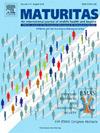Dry eye symptoms in midlife women: A cross-sectional analysis of prevalence, risk factors, and quality-of-life outcomes
IF 3.6
2区 医学
Q2 GERIATRICS & GERONTOLOGY
引用次数: 0
Abstract
Objectives
To assess the prevalence, associated factors, and quality-of-life impact of dry eye symptoms among perimenopausal and postmenopausal women in Thailand.
Study Design
This cross-sectional study, conducted from September to December 2024, included 262 women aged 41–60 years attending a gynaecology and menopause clinic at Ramathibodi Hospital. Participants completed the Ocular Surface Disease Index and the Menopause-Specific Quality of Life questionnaires. Multivariate logistic regression was used to identify factors associated with moderate to severe symptoms.
Main outcome measures
The primary outcome was the prevalence of dry eye symptoms. Secondary outcomes included symptom severity, quality-of-life scores, and occupational or clinical risk factors for moderate to severe symptoms.
Results
Dry eye symptoms were identified in 64.9 % of participants, with comparable rates in perimenopausal (61.7 %) and postmenopausal (68.2 %) women. No significant difference in symptom scores was observed between groups (p = 0.746). Computer-based work was independently associated with moderate to severe symptoms (adjusted odds ratio 1.81, 95 % CI 1.10–2.99). Women with more severe symptoms reported significantly poorer physical, psychological, and vasomotor quality-of-life scores.
Conclusions
Dry eye symptoms are highly prevalent among midlife Thai women and negatively affect quality of life, particularly in the physical, psychological, and vasomotor domains. Occupational screen exposure is a significant modifiable risk factor. Early screening and targeted management may help reduce the impact of symptoms during the menopausal transition.
中年妇女干眼症状:患病率、危险因素和生活质量结果的横断面分析
目的评估泰国围绝经期和绝经后妇女干眼症状的患病率、相关因素和生活质量影响。这项横断面研究于2024年9月至12月进行,包括262名在Ramathibodi医院妇科和更年期诊所就诊的41-60岁妇女。参与者完成眼表疾病指数和更年期特异性生活质量问卷。多因素logistic回归用于确定与中度至重度症状相关的因素。主要结局指标主要结局指标为干眼症状的发生率。次要结局包括症状严重程度、生活质量评分以及中重度症状的职业或临床危险因素。结果64.9%的参与者出现干眼症状,围绝经期(61.7%)和绝经后(68.2%)女性的干眼症状发生率相当。两组间症状评分差异无统计学意义(p = 0.746)。以计算机为基础的工作与中度至重度症状独立相关(校正优势比1.81,95% CI 1.10-2.99)。症状较严重的妇女报告的身体、心理和血管舒缩性生活质量评分明显较差。结论干眼症状在泰国中年妇女中非常普遍,并对生活质量产生负面影响,特别是在身体、心理和血管舒缩领域。职业性屏幕暴露是一个重要的可改变的危险因素。早期筛查和有针对性的管理可能有助于减少更年期过渡期间症状的影响。
本文章由计算机程序翻译,如有差异,请以英文原文为准。
求助全文
约1分钟内获得全文
求助全文
来源期刊

Maturitas
医学-妇产科学
CiteScore
9.10
自引率
2.00%
发文量
142
审稿时长
40 days
期刊介绍:
Maturitas is an international multidisciplinary peer reviewed scientific journal of midlife health and beyond publishing original research, reviews, consensus statements and guidelines, and mini-reviews. The journal provides a forum for all aspects of postreproductive health in both genders ranging from basic science to health and social care.
Topic areas include:• Aging• Alternative and Complementary medicines• Arthritis and Bone Health• Cancer• Cardiovascular Health• Cognitive and Physical Functioning• Epidemiology, health and social care• Gynecology/ Reproductive Endocrinology• Nutrition/ Obesity Diabetes/ Metabolic Syndrome• Menopause, Ovarian Aging• Mental Health• Pharmacology• Sexuality• Quality of Life
 求助内容:
求助内容: 应助结果提醒方式:
应助结果提醒方式:


